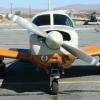New Mooney Owner in 29 Palms
-
Members Online
- PT20J
- sdmideas
- Greg Ellis
- hammdo
- Max Clark
- PeteMc
- MikeOH
- LANCECASPER
- WilliamR
- Mufflerbearing
- John J
- anthonydesmet
- FlyboyKC
- 201er
- JustusSJ
- ArtVandelay
- Sue Bon
- Hank
- Mooney in Oz
- Scottknoll
- eman1200
- Yetti
- amekler
- GeeBee
- KSMooniac
- Fix
- shawn-201zb
- N201MKTurbo
- bencpeters
- Culver LFA
- Zorro
- TCC
- ohdub
- Marc_B
- George Thomson
- 1980Mooney
- Brandt
- kaba
- NickG
- Sabremech
- MooneyModified
- Parker_Woodruff


Recommended Posts
Join the conversation
You can post now and register later. If you have an account, sign in now to post with your account.